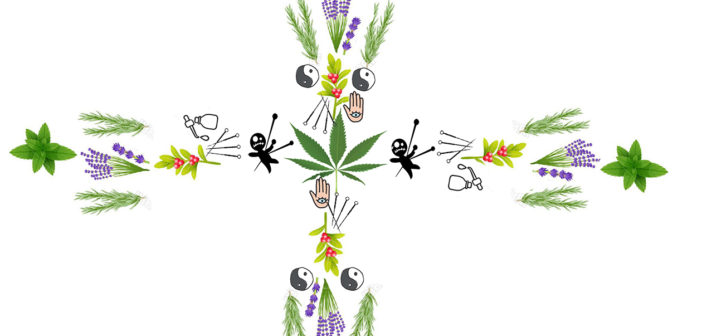Is that consistent lower back pain just someone stabbing the voodoo doll they have of you that’s stored in their sock drawer?
For some, maybe.
It all has to do with what it means to be alternative.
Today, the word is associated with a stray away from what is expected. Whether it’s the alternative music scene, new and different eating patterns (oat milk, yes) or exotic fashion trends, people are attracted to what seems to go beyond the mainstream.
But is it even alternative anymore if everyone is seeking it and doing it?
According to a 2015 CNN article, about one-third of Americans seek help for health-related problems outside of their doctor’s office. Anything from “fish oil, probiotics, melatonin, deep breathing, chiropractors and yoga were among some of the alternatives Americans use to feel better.”
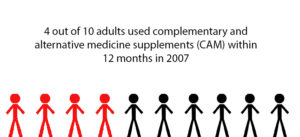
Graphic by Madison Miller
People are seeking this extra help to “relieve pain from chronic conditions, to improve their health overall, and to relieve stress.” Is it our healthcare system failing us or is there something else at play here?
While most of this seems to be complementary, are people developing an aversion to our medical system, or is this all an attempt to make healthcare trendy and new?
Witchcraft and voodoo is renewed
Spending the night in an ancient St. Louis cemetery on top of an influential spiritual person’s tomb really isn’t that far-fetched of a concept in 2019.
It’s all part of an initiatory pagan ritual amongst a dangerous housing project after the death and decay that Hurricane Katrina left.
The concept of witches, spells, curses and this other magical realm has been around for ages. Whether associated with African culture (where witches are still being persecuted in cruel ways today) or America in the 1600s, we have created an image of what a witch means that is very westernized.
Today, the term is very much still in use.
According to an article from Quartzy titled, “The U.S. witch population has seen an astronomical rise,” society is experiencing an increase in witch populations, which is partially driven by millennials.
Millennials have placed an interest in things like crystals, tarot cards and the overall wellness system and have made it a popular trend.
The Pew Research Center has found that around 1 million to 1.5 million people identify as Wicca (involves the learning and understanding of the Earth and nature) and Pagan in the U.S. back in 2008.
While many individuals identify with the religious and cultural beliefs that circulate around witchcraft practices, a lot of it has been mainstreamed because of its connections to other popular forms of alternative medicine.
People, specifically women, who are involved in yoga, meditation or even mindfulness as a part of new-age spirituality, are continuing to emerge (just look at #witchesofinstagram or #witchesoftwitter)
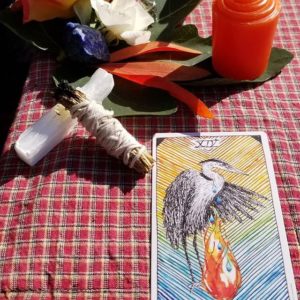
#witchesofinstagram, healingwithnazanin
While the term witch has a lot of history, the term witchdoctor may not be as familiar to most people.
Witchdoctor Utu is a man who lives in St. Catharines, Canada. He goes by the title of witchdoctor that was bestowed upon him from initiatory rites but is continuing to create his own title and style today.
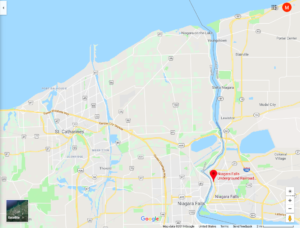
“A witchdoctor is someone who removes conditions and afflictions associated with negative witchcraft,” said Utu. “In Africa alone… witches are still persecuted in a very cruel way. Witchcraft is something that is sought after and tried to be subdued.”
Utu came into contact with this culture through his parents and his upbringing. He is originally from Scotland. Here, his family on both sides are a part of a particular clan that he was born into, something associated with what he called “Scottish mysticism.” He was originally a drummer during certain rituals and then became involved in different temples and rituals. Here he is a member of the spiritual temple and the dragon ritual drummers.
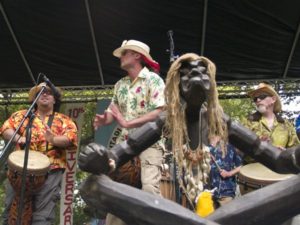
Photo courtesy of Reverb Nation
“In the mid-’90s I ran into the neo-pagans and witches,” said Utu. “I joined a coven that I was able to get access to back then and spent a decade in it and became a priest because I was experienced in witchcraft.”
Although he said most people he knows are understanding of his work, a lot of this has to do with the fact he is immersed with people who are familiar with that world. However, even members of the neo-pagan community were skeptical of him. Voodoo is sometimes considered primal and to even be rooted in aspects of racism.
Currently, Utu works at the historical end of the Underground Railroad. Here he interacts with the spiritual embodiments that are especially strong in this location. His book “Conjuring Harriet ‘Mama Moses’ Tubman and the Spirits of the Underground Railroad” even generated some heated conversation at a large neo-pagan conference.
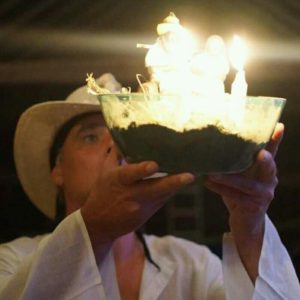
Photo courtesy of Nin Nanaya
“Some people out there decided I shouldn’t be there. They tried to label me as a cultural appropriator because I wrote a book about my own practice in the region that I live in,” said Utu. “Hundreds and hundreds of people wrote blogs and stories about me calling me the most dangerous witchdoctor in the world. I’ve capitalized on that.”
But is being a witchdoctor dangerous or something we should be fearful of?
Utu said that many of his ceremonies would be shocking to the average person. Anything from random animal parts to skulls (obtained from roadkill or hunting) to ceremonies at strange times of the night to having “obscure” things poured on people.
There’s a method behind what appears to be madness.
“My work is more psychological because we have a way of keeping ourselves honest… when a curse has been put on someone, it’s really a trauma from when they were younger mostly, I don’t get into past life stuff, but someone who experiences repeated traumas it sticks to them and affects the way they make decisions. It takes the life force on their spirit and consciousness,” said Utu.
Utu said that he has nothing against Western medicine and has also benefited from it many times. However, there is a tendency to overprescribe when it comes to prescriptions and opioids.
He said he has witnessed miracles happen where severe issues disappear using the power of magic alone.
“I’ve seen colleagues help people who were on antidepressants, antipsychotics, numerous things like that responsibly be taken off and using spiritual means to help that person. I’ve participated in that many times and will again,” said Utu.
Certain cultural aspects have made it particularly hard for some people to take this work seriously.
“It teaches people where rootwork and conjure come from. There’s a lot of commercialization and appropriation… people who promote false narratives and bypass the roots of this… most people want to sell voodoo as good luck and fast sex,” said Utu.
Amongst working with supernatural forces, specifically spirits from the Underground Railroad, Utu’s work as a witchdoctor involves voodoo and rootwork ceremonies and rituals.
According to the HuffPost article, “What is voodoo? Understanding a Misunderstood Religion,” oftentimes the media misconstrued what it means to practice voodoo.
“Voodoo has no scripture or world authority. It is community-centered and supports individual experience, empowerment and responsibility… voodoo embraces and encompasses the entirety of the human experience. It is practiced by people who are imperfect and may use religion for their own purposes,” said Haas.
Voodooists often believe in a visible and invisible world, but these worlds are intertwined into one. Death is a transition, so all our ancestors are still around us in spirit. Many times, Utu said spirits, ancestors and past trauma are the types of ailments that stick to a person.
An age-old practice, a new dawn
Is it possible to treat a person based on the concept of hot versus cold?
Matthew Krystal, professor of anthropology, specializes in working in Guatemala. Specifically, he works doing field work with the Mesoamerican groups of the highlands Maya.
Here treatments and diagnoses are based on the concept of being hot or cold. Since he was working in areas that were high altitude, he was consistently getting a cold and not feeling well. However, when a person gets cold, the belief is that they should not shower. Also, a cup of tea was handed to Krystal but despite the steam pooling out of the cup, it was classified as cold because the wheat grain is classified as cold.
“Chinese herbal medicine… took the language they learned from the land and applied it to the body. If someone is ill it’s because they’re too hot or too cold. Then they learned about the five elements… they applied that terminology to the organs. Then you can match those herbs to a different organ,” said Kimberly Davis, a certified herbalist and acupuncturist.
In many ways, illness and disease are based around the culture they are being viewed from.
“If we think about how, from a cultural perspective, how people conceptualize illness and disease, one way to do that, which stands out amongst many ethnographic studies, is how disease reflects tensions, conflicts, social dimensions of community life,” said Krystal.
While disease and illness may seem scientifically universal, it has become an expression of the tensions and morals of a group of people. So, many cultures will frame tensions or place the blame for non-observable forms of disease in things like sorcery and witchcraft.
These new-age Pagan and witch beliefs are actually internationally or culturally common. As Americans, we’re pretty accustomed to borrowing cultural norms and we are interested in things that come from different cultures. It has made the U.S. seemingly “open.”
“We call ourselves what we call ourselves. Particularly in U.S. society… we legally and culturally give the individual a lot of room on how they classify themselves. We also are uncomfortable with people who go outside the norms. There’s a counter current for pressures of conformity,” said Krystal.
Alternative or fake: A growing debate
Fake science is everywhere.
Simply logging into any social media platform will show conspiracies on how the Earth is actually flat, essential oils will take away suicidal tendencies, and vaccines cause autism.
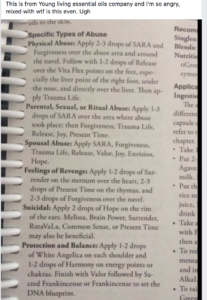
Photo courtesy of Reddit thread
According to Margaret Gill, assistant professor of psychology and neuroscience, fake science ebbs and flows with the epidemics. Right now we are in a measles epidemic, so it’s prevalent again.
“Fake science is anything not backed up by a peer-reviewed, scientific study. This can come from a range of sources… from someone making it up, in the case of autism it was a case study with a lot of data falsification and stuff like that,” said Gill.
Tammy Wynard, assistant professor of kinesiology, said that there has been a process of adopting new norms. What was once seen as more alternative is adopted by a broader audience.
“We hear that from word of mouth, social media, you see people selling it or offering services. I don’t know if there’s an increase, but I also wonder how many people were doing it before, but we just didn’t know about it,” said Wynard.
In many ways, social media has been able to expand our access to information. More research is readily available for people to make their own educated choices. However, the increase in problematic or fake information is also on the rise.
Multi-level marketing groups (MLMs) are a part of people’s distaste toward some alternative products. An article titled “How to Get a Friend Out of an MLM” by Vice explains the problematic world of products like essential oils and supplements that individuals are using social media to sell to their followers.
“MLMs overwhelmingly prey on vulnerable populations — the poor, single mothers, retirees, and even people with chronic illnesses — and promise them the world. Yes, they tell them, you have to invest a little money. But that’s normal when you start a business!” said Thompson.
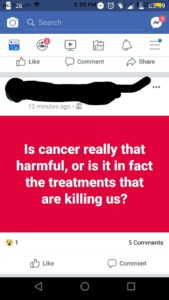
Photo courtesy of Facebook
While the acceptance of alternative forms of treatment are increasing, the social media presence of companies like Herbalife and Younique may hinder the trust in these products. Products such as essential oils and supplements have the potential to make a difference, some companies have the tendency to overexaggerate their effectiveness.
Are shady social media companies the only elements of the alternative world we don’t trust?
Recently, the attitudes toward vaccinations have been a topic that is constantly in the news.
Headlines that range from: “Measles Outbreak: NY is Still Allowing Religious Vaccine Exemptions,” “US measles outbreak is largest since disease was declared eliminated in 2000,” “Trump urges measles vaccinations despite his past views of a link to autism.”
The conversation surrounding vaccinations is consistently in the news as more and more individuals are exposed to diseases that many assumed were no longer of risk.
Gill said that in the future researches need to work on making their studies and information more accessible and easy to understand for the general public. This is similar to what doctors try to do today. Some associate the rise of alternative medicine thinking or patterns with the denial of traditional vaccination regulations.
“I wouldn’t say that there’s a rise in alternative medicine necessarily. It’s more that nowadays compared to what it used to be, you can use the internet to look things up,” said Gill. “Everybody because of that thinks they have the expertise to be a doctor or whatever based on the internet.”
According to the article “An Anti-Vaxxer’s New Crusade” from The New Yorker and ProPublica, there has been an increase in child abuse cases which often deal with anti-vaccination supporters. This article highlights David Ayoub who testifies for the defense of a child who died due to child abuse, but it was argued that it was because she had a rare condition that causes fragile bones. Ayoub was known to support the idea that the Vaccine Alliance was committing genocide and groups like the World Health Organization was forcing sterilization on Third World countries. He’s amongst many with similar beliefs.
“These claims are mostly dismissed by scientists, but they have nonetheless spurred a burgeoning worldwide ‘anti-vaxxer’ movement, which has fuelled a decline in vaccination rates. Both positions reflect a deep suspicion of government and mainstream medicine and a rising backlash against scientific consensus in an era when misinformation quickly spreads online,” said Armstrong.
The issue is becoming so large that different groups and social media platforms are actively trying to limit people’s exposure to health or vaccine-related false information.
For example, an article from NPR titled “Facebook Vows to Quash Anti-Vaccine Misinformation” said that Facebook plans to rely on vetting from leading global health organizations that “have publicly identified verifiable vaccine hoaxes.”
Any vaccine-related misinformation will be removed, including any ads. The problem, however, may go a lot deeper than misinformation online.
“There is no evidence that there is an association between vaccination and onset of autism,” said Krystal. “The reason people continue to believe it is because there is a larger context with corporate misdeed. Skepticism is important in a Democratic society, but in certain respects, it has gone too far.”
The trust society has on large corporations continues to increase and many believe the “system” is out to get them.
Needles and herbs
A needle a day keeps the doctor away?
The ear alone has hundreds of small pressure points. Each section connects back to another part of the body and can, with a small prick, have an impact in a completely different area of the body.
Acupuncture can have the power to increase endorphins and target parts of the mind and body that are being particularly problematic. With repeated visits, it can help reduce instances of chronic pain.
The process of acupuncture involves the insertion of very thin needles at strategic points all throughout the body. It is a key component in Chinese medicine and is often used to help deal with some form of pain. Recently, it has become more popular with stress management.
Kimberly Davis is a professional who uses acupuncture, herbal medicine and essential oils in her office here in Naperville. She started looking for a career in alternative health after doing some training in corporate America.
“Around that time I started to do some yoga. My yoga instructor gave me a bunch of essential oils and I started working with it. I thought it was really cool and it was helping with a lot of things,” said Davis.
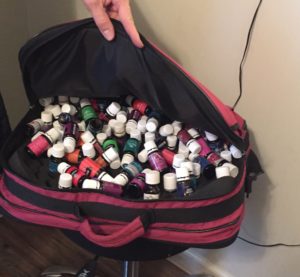
Photo by Madison Miller
Davis originally opted for a career in alternative medicine because she assumed it was going to be less time-consuming. However, it turned out that techniques like acupuncture and herbal medicine are a lot more involved than she realized. Right now acupuncture is the most in-demand form of alternative health techniques.
Acupuncture and herbal medicine both follow a diagnostic process, but can also not be as predictive of what kind of outcome it will have on the patient. By law, alternative medicine is not a cure.
“We are not by law able to say we cure anything. We work with things, we assist with things, I have had people who’ve had very serious conditions. I had someone with a failing liver and we started him with some dietary things since he wasn’t able to eat, a little bit of acupuncture and herbs and it made it so he could eat a little,” said Davis.
The story was different for the friend.
“Eventually he got his blood tests back from his doctor and his liver enzymes had changed. They were so much better, he was on the road to recovery… on the other end, he sent me his friend with a similar diagnosis, but he was much further along. I worked with him, but he ended up passing away,” said Davis.
Often times, alternative medicine is met with skepticism. As a culture, people have become accustomed to traditional, modern medicine and everything else seems a bit hard to believe. Could tiny needles that are barely visible possibly make a big difference?
Skepticism has become second nature.
“Even some members of my own family I can see what’s going on with them and I think it would be pretty easy to solve, but they’re skeptical and they don’t want to go there,” said Davis. “I see a lot of people who have been to many doctors for something and they’ll come to me after having surgery and lots of meds. It’s better if they start with less invasive medicine.”
In many ways, alternative medicine is an assistant to the modern form of medicine. Most people use it in conjunction with other treatment. It tends to focus on a different way of looking at healing that, for many, seems very alternative. Alternative medicine tends to put healing in the individual’s hands. It increases the connection between mind and body.
“It’s not alternative in Asia, it just is. They realize the time and space that needs to be made for it,” said Wynard.
Davis said that the process of becoming certified is far more involved than what other people probably realize. In Illinois, an individual needs a 1,000 hours in the clinic and a license. She said she works pretty similar to a doctor.
“I think that alternative medicine has its place and has a diagnostic element and it works really well in conjunction with the other medications we have discovered,” said Davis. “It’s four years to even get started in it, I have like six. It’s very different than someone who decided to sell supplements out of their garage.”
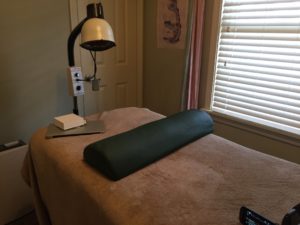
Photo by Madison Miller
The increase in alternative medicine use has a lot to do with more exposure. People are more familiar with it. The odds of knowing someone who believes and uses alternative medicine is far more common today.
It’s becoming a way to make healthcare an independent choice.
“I think people want to have more control, to be their own advocate, plus we have problems with our system,” said Davis.
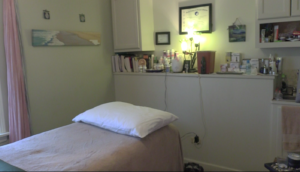
Photo by Madison Miller
What is it about our system that has made people so skeptical?
An increase in large corporations controlling medicine and pharmaceuticals has made people wonder if they can trust health care professionals.
Should our healthcare system be so driven by a desire for money?
Searching for a national high
Is CBD the next avocado toast or fidget spinner or Tide Pod?
CBD oil seems to be everywhere (even dogs are getting in on the action.) Available in everyday supermarkets, getting CBD has become as easy as putting it in the cart. What has made it more popular in the last few years?
According to the New York Times article “Why is CBD Everywhere?” it could be media icons like Mandy Moore using CBD oil at the Golden Globes for high heel pain or Willie Nelson’s line of CBD-infused coffee beans to the qualified endorsement that happened on “The Dr. Oz Show.”
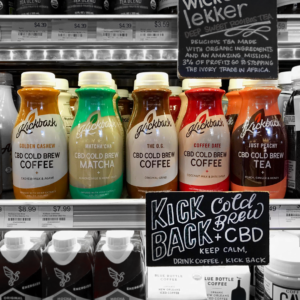
Photo labeled for reuse
CBD is short for cannabidiol, which is an abundant chemical in the cannabis plant. It is described “like taking a warm bath, melting the tension away,” said Williams.
Given the overall anxiety of this generation mixed with an obsession with legalizing marijuana, this outlook seems like a clear step.
“What a convenient time for Mother Nature to bestow a perma-chillax cure that seems to tie together so many cultural threads at once: our obsession with self-care and wellness, the mainstreaming of alternative therapies and the relentless march of legalized marijuana,” said Williams.
Anything from drinks to coffee to makeup to skincare to dog treats to vape juice to bath bombs to restaurants to pharmaceuticals. Society is in deep.
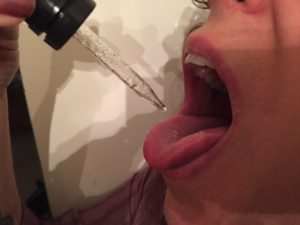
Photo by Madison Miller
Even beyond marijuana, Colorado has recently gone as far as to legalize psychedelic mushrooms. This is an example of the national race toward legalizing health-related drugs and removing the stigma or criminalization associated with them.
Since it doesn’t necessarily follow a diagnostic process, it may be hard for some individuals to use.
“I’ve worked with CBD oil on certain patients and it works great for some people and for some other people it doesn’t work… My issue with CBD oil right now is there is no solid diagnosis system for me to use. It’s a hit or miss, you have to just try it and see if it works,” said Davis.
For some, the conversation with CBD falls under the umbrella of marijuana use. While marijuana is medically purposeful, it is still under debate if it should be recreational.

Photo by Madison Miller

Photo labeled for reuse
“Everything with marijuana… we’ve never approved a medication through a vote. It has always gone through the FDA. We’ve just never voted on a medication,” said Wynard.
Not only is marijuana a voted on drug, but it has also single-handedly led to problematic criminalization patterns that have caused our jails to be used as holding cells for simple misdemeanors. So while some states, such as Colorado, have legalized marijuana many others still have a long way to go.
An organization called SAM (Smart Approaches to Marijuana) wants a “health-first approach to marijuana policy.” They claim their approach is based on “reputable science” and “public health and safety.”
Marijuana, CBD, or any similar products are beginning to integrate into the world of alternative medicine use. Should they be as accepted as other forms of alternative medicine or looked at with a similar level of skepticism?
A common perspective
Alternative medicine really isn’t that alternative anymore.
For many people, we know someone who is active in some form of treatment that goes beyond doctor’s visits, prescriptions and drugs. It can often be cheaper, faster and possibly more comfortable.
Are most people “believers” in this kind of work though? Is it something that needs a little faith?
Dan Chambers, a 25-year-old, has had experience with alternative medicine that has altered how he views this kind of work. Through family connections, he got into contact with a woman who does CranioSacral therapy. This is a gentle, hands-on approach that supposedly relieves pain and improves the body’s health and performance. A touch about the weight of a nickel is all that is required.
The main goal is to normalize the environment around the central nervous system to allow the body to self-correct.
“I went to this lady who is based out of Pennsylvania, but also goes to four different states and sets up shop there. She’s CranioSacral therapist and she barely touches you, if she does its very light on your cranium and your back or pelvic bones,” said Chambers.
With barely any pressure, she was able to make a lot of change and correct assumptions about his health.
“She was feeling my spine and she was like ‘oh did you hurt your ankle four months ago’ and I did hurt that ankle four months ago so she went and touched my ankle, then went back to my head,” said Chambers.
The experience made him feel relaxed like he went to a masseuse or chiropractor. But how does such a simple touch really relieve that much pain? The answer is complicated. According to Chambers, she said that God gave her the ability to heal in the way that she does. This form of treatment is treated with a lot of skepticism from the medical and scientific community as not being possible to treat to the extent it claims. It doesn’t seem grounded in any form of diagnostic science.
For some, healing has a lot to do with mentality. Some forms of healing structure themselves along a pretty strong placebo effect or a mental fixation.
At the end of the day, one experience can cause a person to view healing, medicine and their overall connection with their body in a completely different light.
“I’m definitely a believer in this kind of work. I felt awesome. It was really some voodoo shit,” said Chambers.

